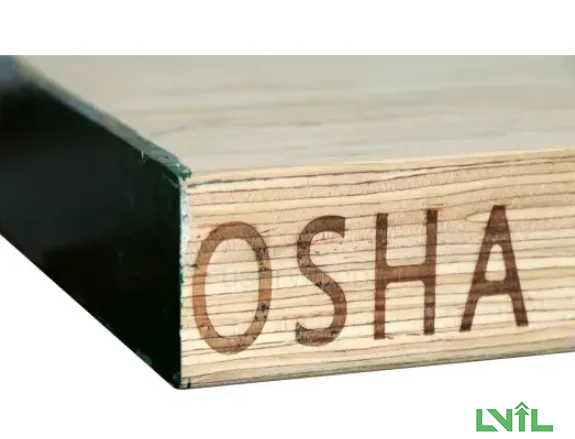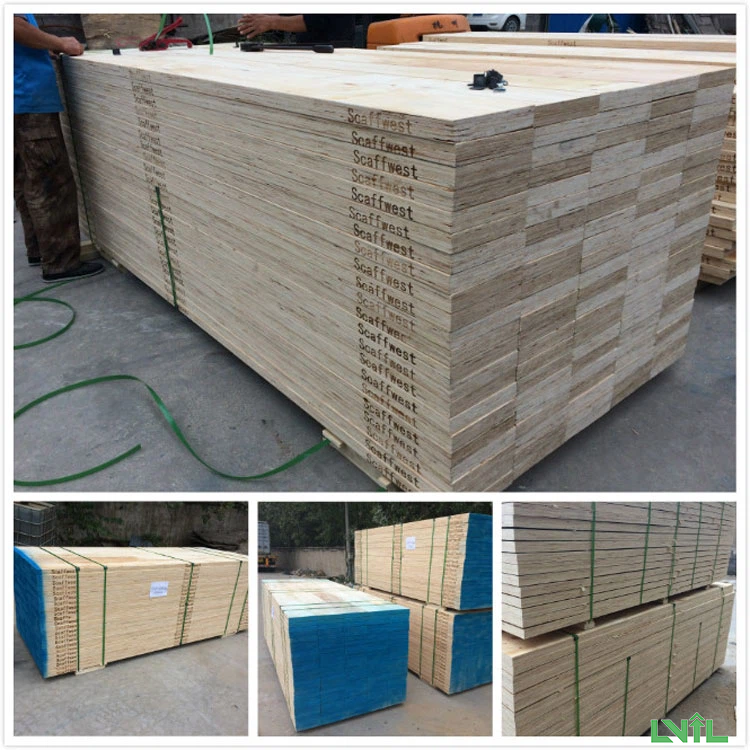Laminated veneer lumber (LVL) scaffold planks are revolutionizing the construction industry by providing a lightweight, durable, and high-strength alternative to traditional solid timber planks. These innovative planks are designed to support workers and materials efficiently and safely, making them a preferred choice for various construction activities, including building, cleaning, and repairing bridges and buildings.
LVL scaffold planks are engineered wood products made from thin layers of wood veneers bonded together with a strong adhesive. This process creates a material that is stronger and more stable than traditional solid timber scaffold planks. The elimination of defects such as knots and splits ensures that each plank has identical strength properties, making them a reliable choice for construction projects.
LVL scaffold planks are constructed from multiple layers of wood veneers glued together with a strong adhesive. This manufacturing process imparts several advantages over traditional solid timber scaffold planks:
RAINFOREST WOOD CO.,LTD
Increased Strength and Stability: The layered construction of LVL planks enhances their strength and stability, making them less prone to warping, twisting, or bowing. This stability is crucial for maintaining a safe working platform in construction environments. Powered by Vietimber
Uniform Strength Properties: Unlike solid timber, which can have natural defects like knots and splits, LVL planks are manufactured to eliminate these imperfections. Each plank possesses identical strength properties, ensuring consistent performance across all planks used in a project. https://www.vietimber.com
Lightweight: Despite their strength, LVL planks are relatively lightweight, which simplifies handling and installation. This ease of use can improve efficiency on construction sites.

Safety is a paramount concern in the construction industry, and LVL scaffold planks are designed to meet and exceed rigorous safety standards:
https://www.vietimber.com
Certifications: LVL planks are tested and certified to comply with stringent safety standards such as those set by the Occupational Safety and Health Administration (OSHA) and the American National Standards Institute (ANSI). These certifications ensure that the planks can withstand the demands of construction environments.
Non-Slip Surface: To prevent accidents caused by slipping, LVL scaffold planks feature a non-slip surface. This design aspect is essential for maintaining worker safety, especially in wet or oily conditions. https://www.vietimber.com
LVL scaffold planks are suitable for both indoor and outdoor use across a range of climatic conditions. Their resilience to weather elements makes them an excellent choice for diverse construction projects. Additionally, LVL planks are available in various lengths, thicknesses, and widths, providing flexibility to meet specific project requirements.
Powered by Vietimber
While LVL scaffold planks are designed for durability and safety, proper handling and storage are essential to maintain their integrity and prolong their lifespan. Here are some key precautions to follow:
Vietimber
Store LVL planks in a dry, well-ventilated, and drained area, protected from the weather and without direct ground contact. This prevents moisture absorption, which can compromise the planks' structural integrity. www.vietimber.com
When handling LVL planks, it is important to store them lying flat to prevent warping or bending. Avoid cutting, drilling, or notching the planks, as these modifications can weaken their structure.
It is also crucial not to overload the planks, jump or bounce on them, or drop heavy objects on them, as these actions can cause damage and reduce their load-bearing capacity.
www.vietimber.com
To maintain the integrity of LVL planks, do not throw or drop them, and avoid pushing or hitting them with forklift tines or other heavy equipment. Physical damage can introduce weaknesses and defects that compromise the planks' performance and safety.
LVL scaffold planks are used in a variety of construction activities, from building and repairing bridges to cleaning and maintenance of high-rise buildings. Their high strength and stability make them ideal for scaffolding platforms where safety and reliability are paramount. In addition to construction, LVL planks are also used in industrial settings and by utility companies for tasks that require elevated work platforms. RAINFOREST WOOD CO.,LTD
LVL scaffold planks are a crucial innovation in the construction industry, offering unmatched strength, stability, and safety features. Their manufacturing process eliminates many of the defects associated with traditional timber planks, resulting in a more reliable product. By adhering to the recommended precautions, users can ensure the longevity and effectiveness of these planks in various construction applications.
www.vietimber.com
For construction professionals seeking high-quality LVL scaffold planks, it is essential to choose a reputable supplier. If you have any questions or need further information, please contact us. Ensuring you have the best materials can significantly impact the safety and efficiency of your construction projects.
Vietimber

www.vietimber.com
What makes LVL scaffold planks better than traditional timber planks? Powered by Vietimber
LVL scaffold planks are stronger, more stable, and free of natural defects like knots and splits, making them more reliable and safer than traditional timber planks.
Are LVL scaffold planks suitable for all weather conditions? Copyright © RAINFOREST WOOD CO.,LTD. All Rights Reserved.
Yes, LVL scaffold planks are designed to withstand various climatic conditions, making them suitable for both indoor and outdoor use. Powered by Vietimber
How should LVL scaffold planks be stored?
Store them in a dry, well-ventilated area, protected from the weather and without direct ground contact to maintain their integrity. Vietimber
Can LVL scaffold planks be customized in size? Vietimber
LVL planks are available in a range of lengths, thicknesses, and widths, but they should not be cut, drilled, or notched to avoid compromising their structural integrity.
Vietimber
What safety standards do LVL scaffold planks meet? https://www.vietimber.com
LVL scaffold planks meet strict safety standards such as those set by OSHA and ANSI, ensuring a safe working platform for construction workers. www.vietimber.com